LAST UPDATED: 1/19/24 – Ultimate Milford Track Hiking Guide
This Milford Track Hiking Guide contains references to products on my Amazon Store site. I may receive a commission when you purchase these products from my store, though at no additional cost to you. I hand-pick and recommend only the products that I am either familiar with or comfortable recommending.
Some amazing hikes traverse some absolutely beautiful landscapes around this world. Last year I detailed one of those hikes when I provided a detailed guide for hiking the Inca Trail to Machu Picchu in Peru. A lesser-known, but equally amazing hike that you can take in this world is the Milford Track hike in New Zealand’s Fiordland National Park.
The Milford Track may not get the press that the Inca Trail gets, but from someone who has visited both Machu Picchu and Fiordland National Park, I can assure you that both of these hikes go through some equally stunning landscapes. Both of these landscapes involve epic mountain ranges that are bordered by rainforests. Just like the Inca Trail, the Milford Track takes you through the mountains and rainforest and leaves you speechless at the beauty.
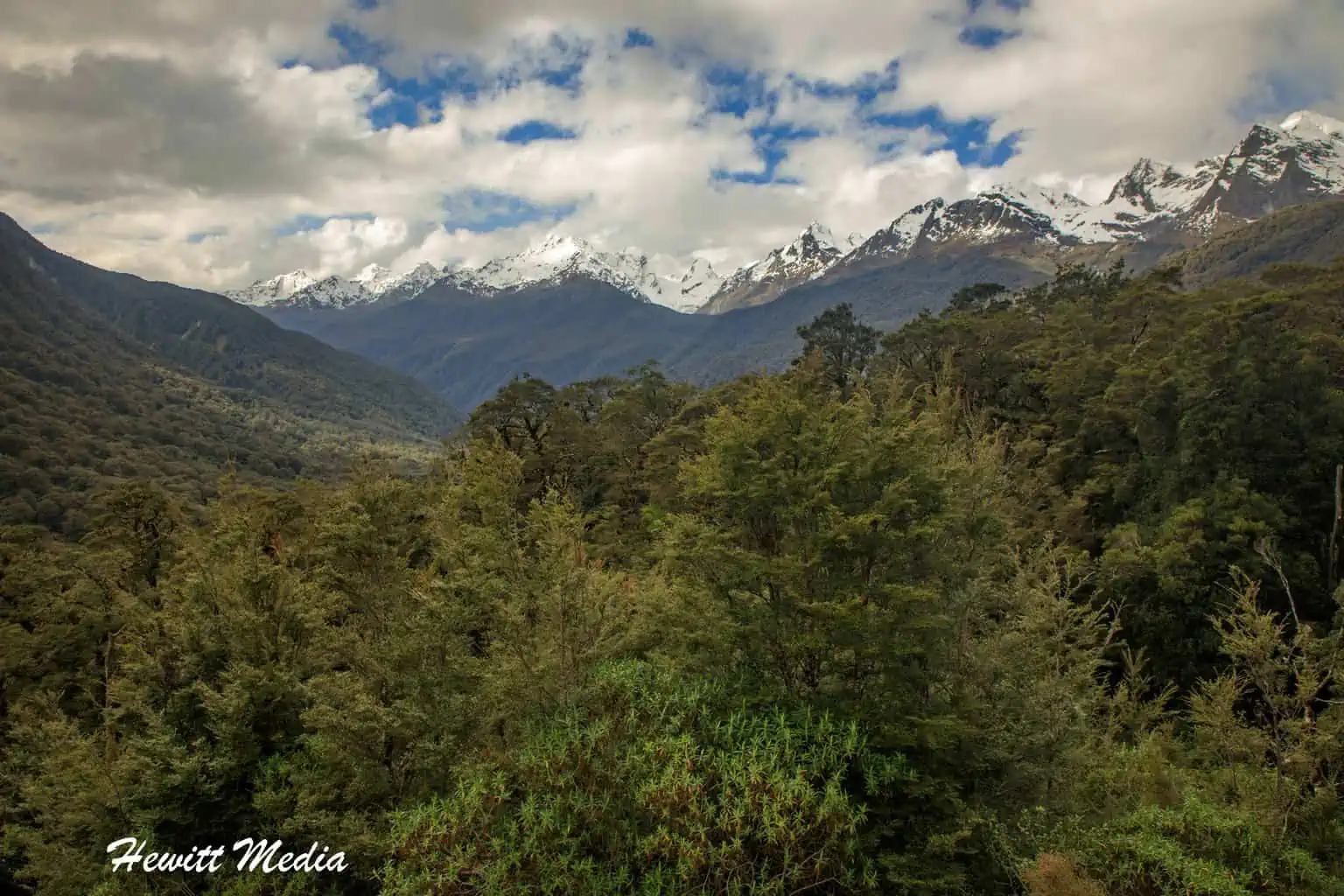
In this Milford Track hiking guide, I am going to review the Milford Track and give you all of the information that you need to take on this epic hike. I will discuss the Milford Track hike and the landscapes it traverses, outline the best times of year to make the hike, discuss the equipment that you should bring with you, and advise you on how to prepare for the hike. Armed with this Milford Track hiking guide, you can be assured that your experience hiking the Milford Track will be successful.
Milford Track Hiking Guide Navigation Menu
About the Milford Track Hike
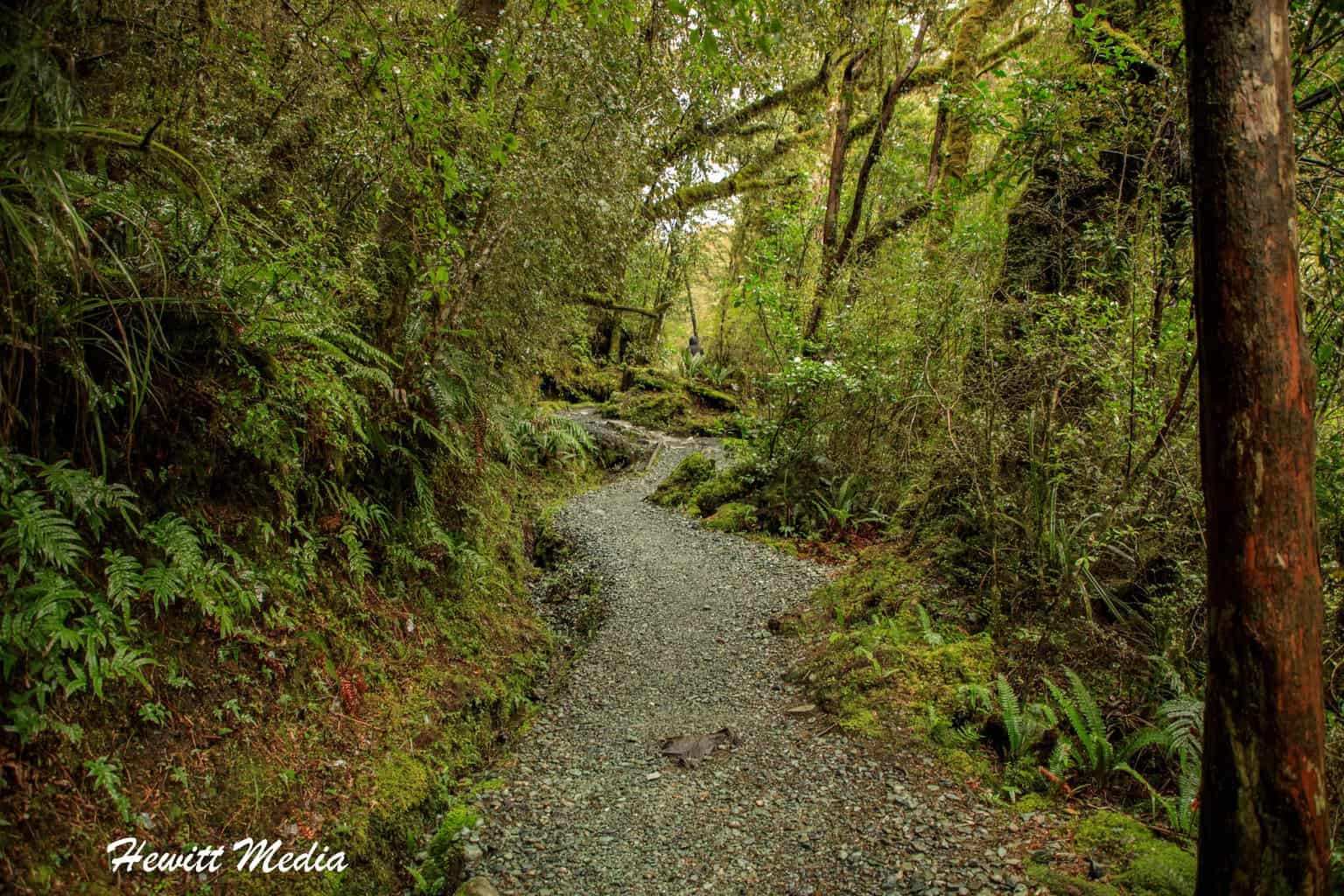
For those of you who are unfamiliar with Fiordland National Park and Milford Sound on New Zealand’s Southern Island, the national park is one of this world’s most stunning pieces of public land and Milford Sound should, in my opinion, be classified as one of this world’s most beautiful landscapes.
Fiordland National Park is a large chunk of land at the Southern tip of New Zealand’s Southern Island that is made up of the most stunning fjords and sounds you will find in this world. With the largest of the mountains in the park surrounding it, Milford Sound is arguably the most beautiful of these fjords and sounds.
The Milford Track traverses the mountains and rainforests that border the ocean fjords and sounds within the park, so you can imagine the beautiful views you get when you make this hike. This is why the Milford Track hike is quickly becoming one of this world’s most popular multi-day hikes.

The Milford Track starts just outside of the town of Te Anau Downs at Glade Wharf and ends at Sandfly Point on the edge of Milford Sound. Typically, this hike takes four days for hikers to complete. For most hikers, the hike will include between 9-13 mile (or 15-21km) hiking days that will take between 5-8 hours to complete (depending on your fitness and experience level).
Best Time to Hike the Milford Track
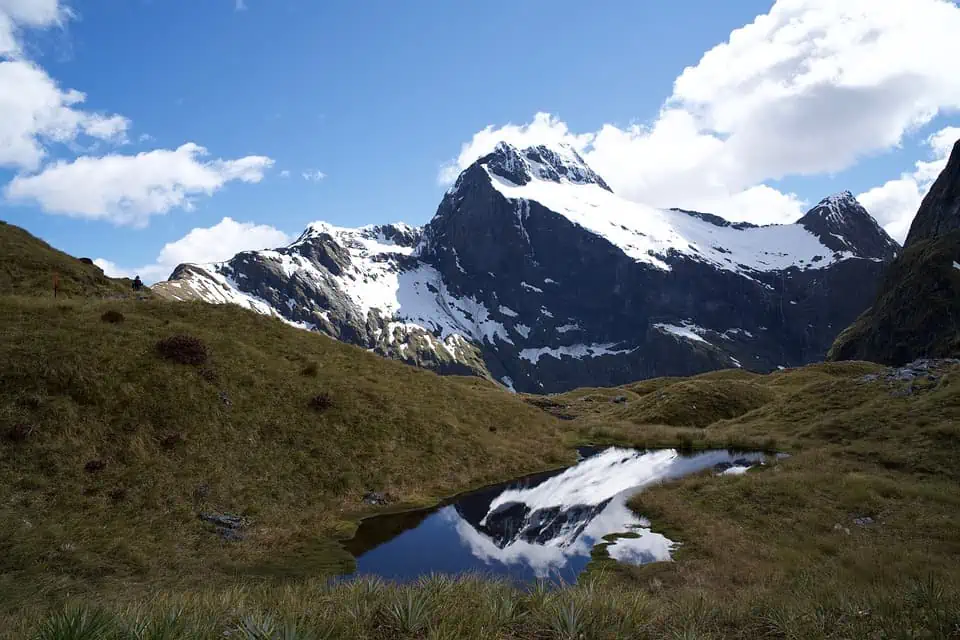
When hiking the Milford Track, several huts are available for you to stay in along the trail. These huts are only open during the Great Walks Season, which typically runs from late October until late April each year. The number of permits for hiking the Milford Track is limited each day to the available huts. Camping is not permitted on the Milford Track. For this reason, only 50 guided hiking permits and 40 solo hiking permits are handed out each day.
If you would like to hike the Milford Track on a specific day, you are going to likely need to reserve your permit up to a year in advance (depending on the popularity of the day you choose). If you would like to reserve a spot in the middle of the summer, you are probably going to need to make your reservation much earlier than you would for a day at the beginning or end of the season.
During the winter months (between May and October), the Milford Track is still open, but there are a limited amount of facilities that remain open for you to take advantage of. Because of that, and the fact that there is an elevated risk of avalanches along the trail in the winter season, I would not recommend doing the Milford Track hike in the winter. This is especially true if you are an inexperienced hiker and haven’t hiked the Milford Track before in the past.
Fitness Level and Experience Required
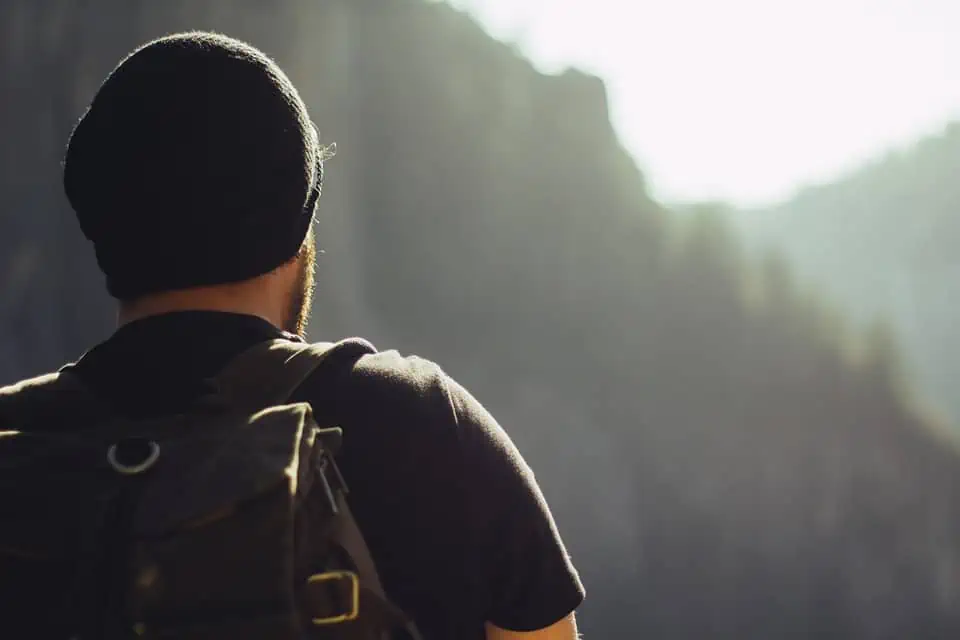
The Milford Track is a long hike, but it isn’t necessarily a difficult hike. It is difficult in the sense that you need to be able to hike upwards of a dozen miles in a day, but the track isn’t difficult in the sense that it doesn’t require any rock scrambling or climbing or any overly technical hiking. For that reason, if you are of a fitness level that allows you to walk the distances, you can certainly complete this hike.
If you are concerned about the daily walking distances required for this hike, the good news is that you have options available to you. If you aren’t as experienced a hiker or you think the daily walking distances are near the threshold of what you are capable of, you can choose to hike the track as part of a guided group.
There are several guided group excursions available to hike the Milford Track with. On the other hand, if you have a lot of experience hiking and you are sure of your abilities, you can choose to walk the track on your own. However, if you choose to do this you will need to carry your own food and more water with you.
How to Hike the Milford Track
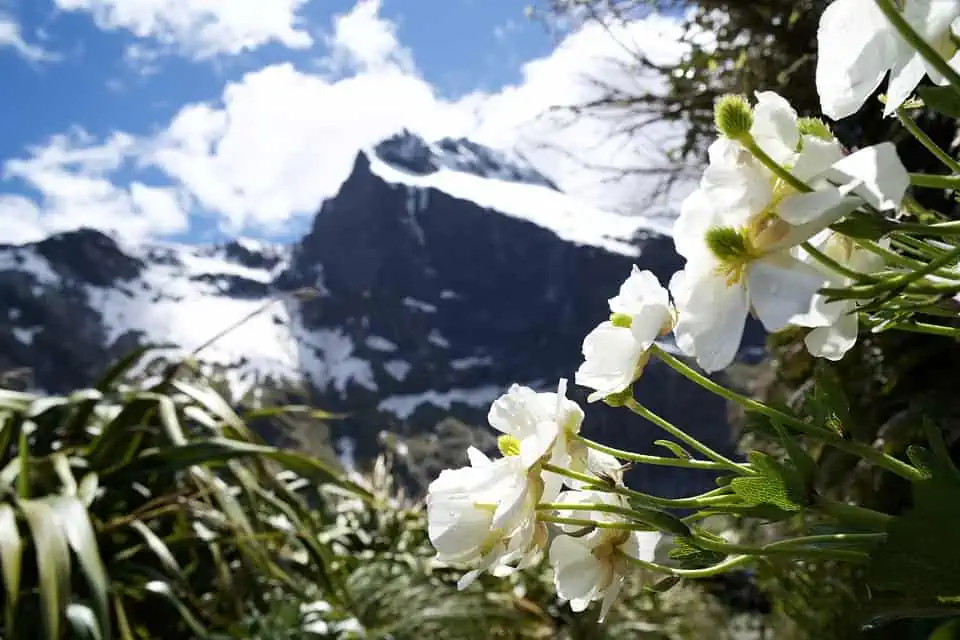
Hiking the Milford Track is quickly becoming one of this world’s biggest travel adventures. However, before you can hike the track, you need to know how to get there and understand what you can expect on this multi-day hike. In this section, I will outline the best ways to get to the Milford Track in Fiordland National Park and let you know what you can expect on this four-day hike.
Getting There
If you are going to be visiting Fiordland National Park to hike the Milford Track from outside of New Zealand, you have a few options on how you can fly into New Zealand and drive to the park. I have outlined both of those options in my Milford Track hiking guide below for you to review.
Flying Into Queenstown
The preferred way to fly into New Zealand to visit Fiordland National Park is to fly into Queenstown on the South end of New Zealand’s South Island. The international airport in Queenstown is only a 2.5-hour drive from Te Anau Downs, which is home to the beginning of the Milford Track.
Queenstown is also known as the Adventure Capital of the World, with many options for bungy jumping, skydiving, jet boat tours, and other adventure tours out of the city. So if you are up for a little adventure before your hike, you might want to plan a few days in Queenstown before you head down to Fiordland National Park.
If you would like to head closer to Fiordland National Park after flying in to get some rest before your hike, you can book accommodations in the town of Te Anau. This cute, quaint town has several accommodations and dining options and is only a short 20-minute drive from the start of the Milford Track.
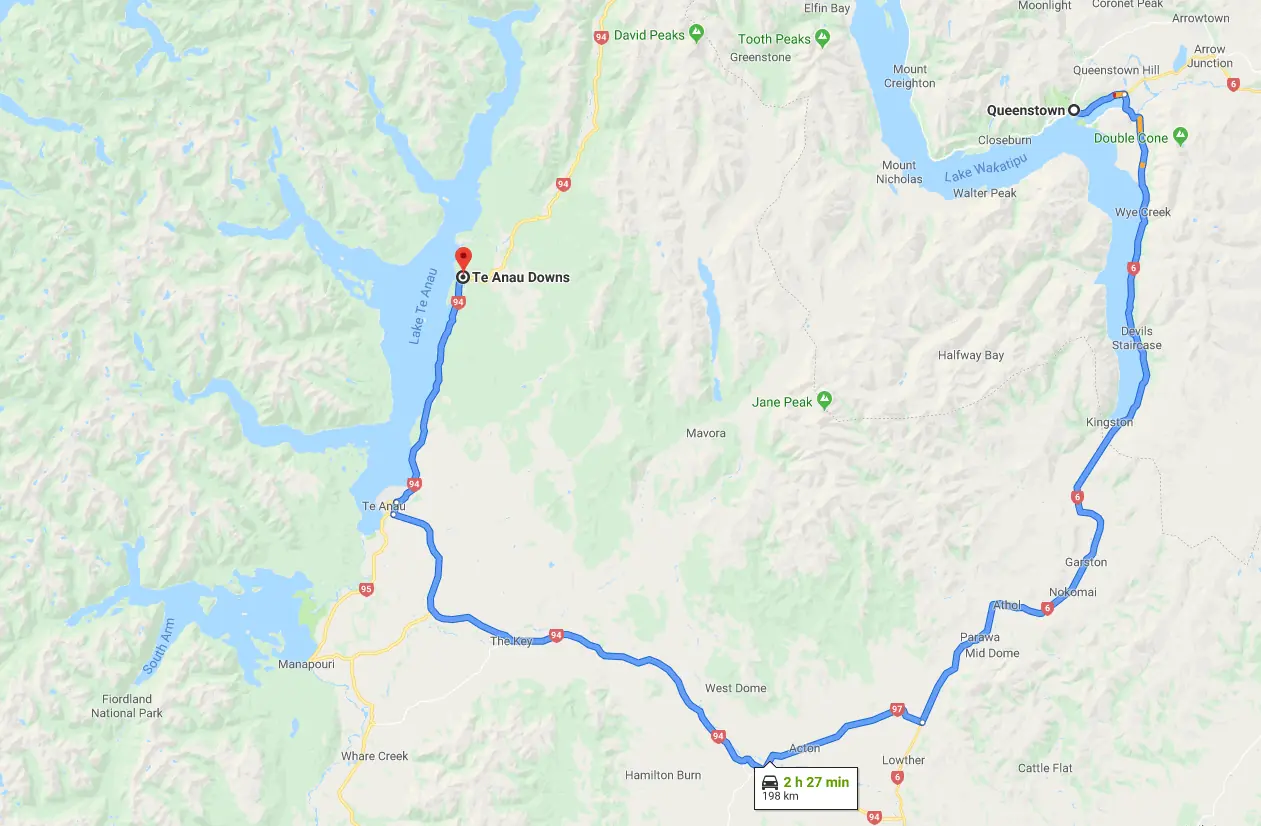
Flying Into Christchurch
Another option that you have for flying into New Zealand’s South Island to visit Fiordland National Park would be to fly into Christchurch. Because it is much further away from Fiordland National Park than Queenstown is, it tends to be a less attractive option for those people who are visiting primarily just to hike the Milford Track. However, for those who are visiting New Zealand’s South Island to do some sightseeing at the island’s other national parks before hiking the Milford Track, it can be an attractive option.
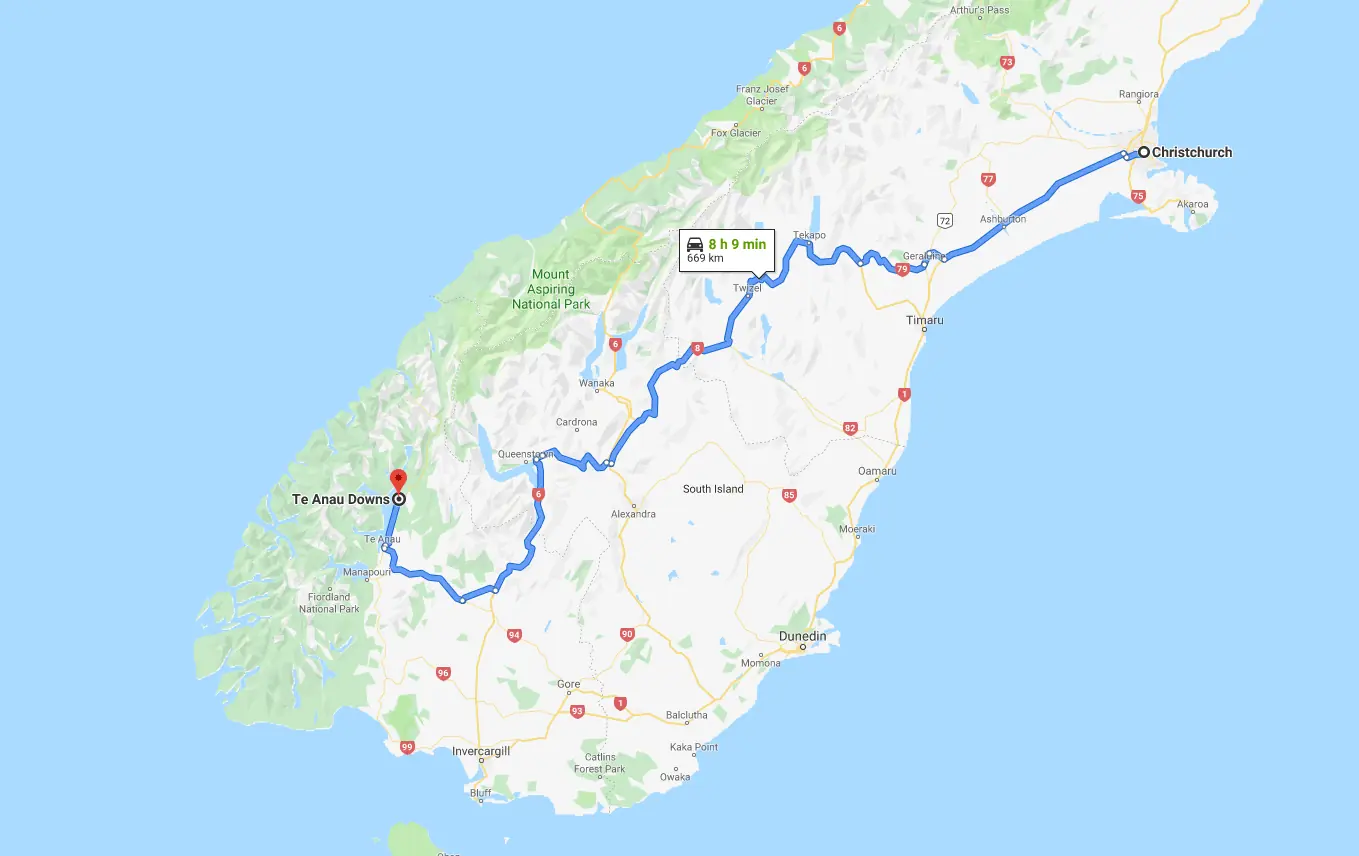
Milford Track Hike Overview
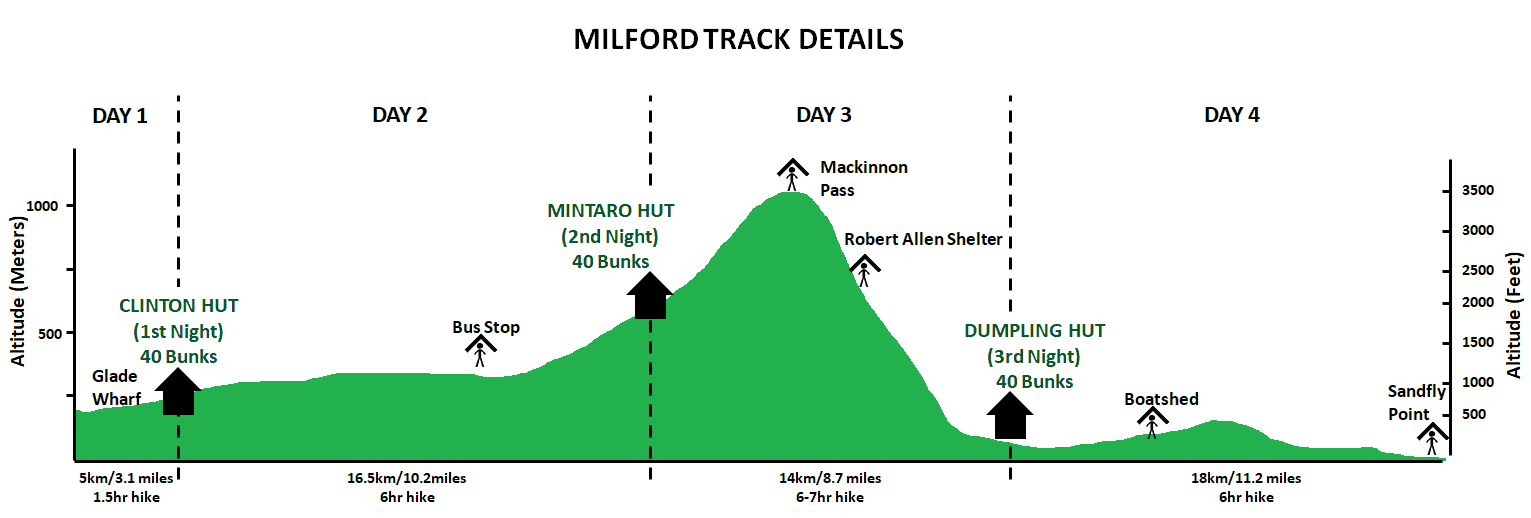
For most hikers, the Milford Track will take four days of hiking to complete. The first day of hiking is relatively short but also includes a roughly 1.5-hour boat ride from the town of Te Anau Downs to the start of the Milford Track at the Glade Wharf. While the next three days of hiking aren’t overly difficult technically and don’t include any climbing or rock scrambling, they do include an average of 10 miles\16km of hiking. In case you are interested, I have included a rough outline of the typical itinerary for you to review in my Milford Track hiking guide below.
Day 1 – Glade Wharf to Clinton Hut (5km/3.1 miles – 1.5hr hike)
After arriving in Te Anau Downs, the first thing you will need to do is take a boat ride to the start of the Milford Track at Glade Wharf. There are scheduled boat services that run between Te Anau Downs and Glade Wharf daily at 10:30am, 1:00pm, and 2:00pm, as well as on-demand taxi services from Te Anau Downs. These transports typically take between 1 hour and 1.5 hours and can be booked with several different authorized local operators.
After getting to Glade Wharf, you will need to complete a short 3.1 mile\5km hike to your first destination, which is Clinton Hut. There you will settle in for the night and prepare for a lengthier hike the next day. There isn’t much elevation change on the first day of hiking, so this short hike should only take an hour or two to complete.
Day 2 – Clinton Hut to Mintaro Hut (16.5km/10.2miles – 6hr hike)
On the second day of your hike, you will want to get up early as you have a much longer hike to complete than the previous day. You will start a gradual ascent as you follow the Clinton River to Lake Mintaro, which sits at the base of the legendary Mackinnon Pass. As you make your way through the Clinton Valley, you will be in awe at the scale of the rocky cliffs that surround you on each side of the valley. After a long day of hiking, you will spend your second night in Mintaro Hut. Get some good rest because you will have another long hike the following day.
Day 3 – Mintaro Hut to Dumpling Hut (14km/8.7 miles – 6-7hr hike)
The third day of your Milford Track hike will undoubtedly be the toughest day of hiking you will undertake as you will need to climb the steep Mackinnon Pass. At roughly 1,150 meters (or around 3,800 feet) in elevation, the Mackinnon Pass is a challenge to ascend. However, from the top, you will be rewarded with amazing views of Lake Mintaro and the Clinton Canyon.
Once you have reached the top of Clinton Pass, which is marked by the MacKinnon Pass Shelter, you will descend to the valley below. On your way down, you will pass several amazing waterfalls along the Roaring Burn River for you to explore. You will finish your day at Dumpling Hut where you will rest your feet after an impressive day of hiking.
Side Trip to Sutherland Falls (1.5hr round trip)
On your descent from Mackinnon Pass, you have the option of taking a roughly 1.5-hour round-trip side trek to see the beautiful Sutherland Falls. If you aren’t up for the side hike, you can always admire the falls from a distance. It’s adding extra mileage to an already high mileage day, but if you have the extra energy, the falls are definitely worth an up-close look.
Day 4 – Dumpling Hut to Sandfly Point (18km/11.2 miles – 6hr hike)
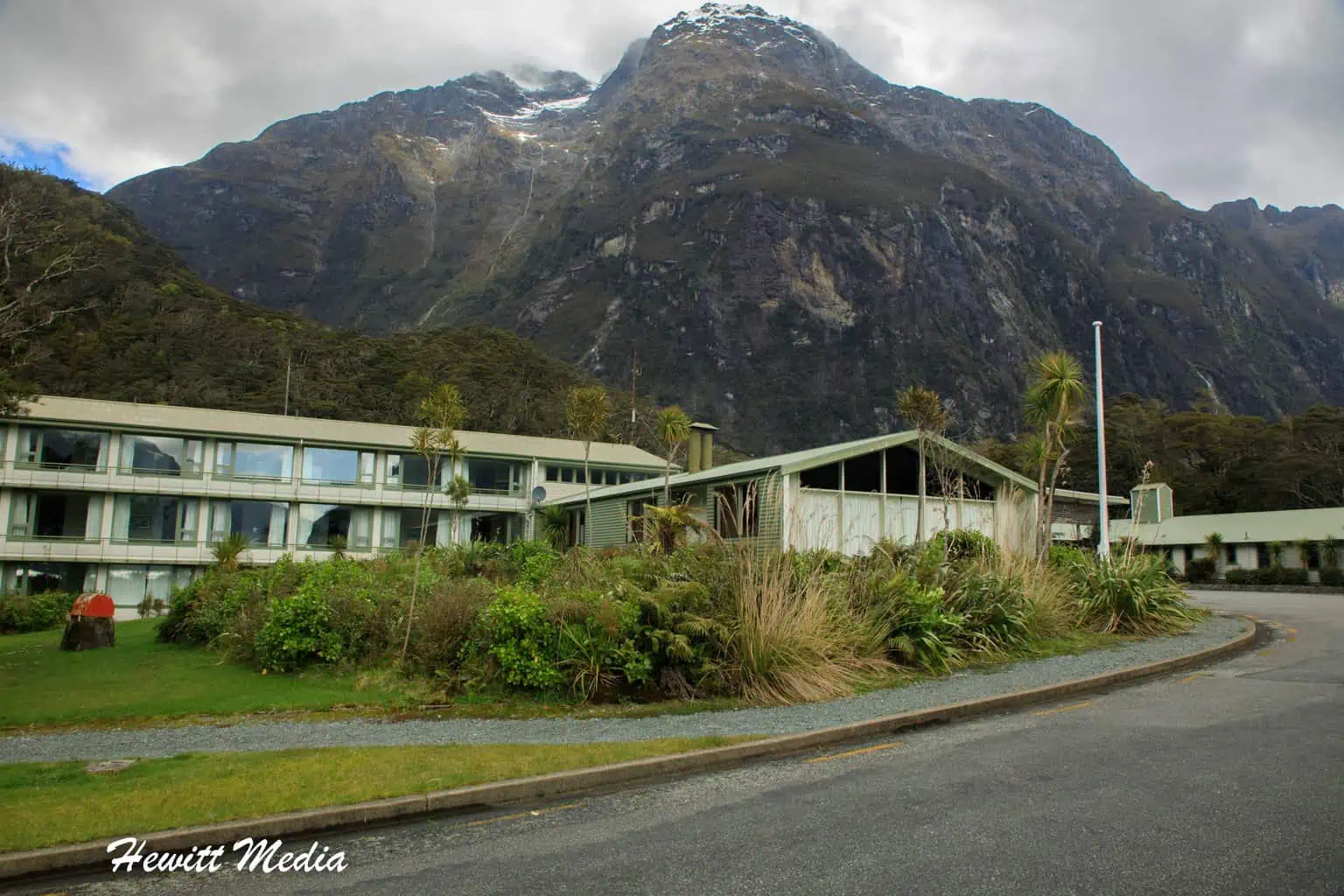
On your final day of hiking, you will depart Dumpling Hut and follow the Arthur River until you arrive at the historic boatshed. From there, you will continue past such features as the beautiful Mackay Falls and Bell Rock that sit along the Arthur River. There will not be any big elevation climbs on this day of hiking, so you can give your weary legs a rest and just admire the beautiful scenery. As an added treat, the last 3km (or 1.8 miles) of the hike is on a wide, established track.
Once you reach Sandfly Point, which gets its name because of all the pesky sandflies you find there, you will need to take a short boat ride to the Milford Sound port and rest up after completing your epic hike. If you used the Ultimate Hikes Guide Company to guide you on your Milford Track hike, they have a hotel next to the Milford Sound port (pictured above) that you can stay at that night. Otherwise, you will need to arrange accommodations for the night and prepare for a boat cruise of the legendary Milford Sound the next day.
Day 5 – Milford Sound Cruise (No Hiking)
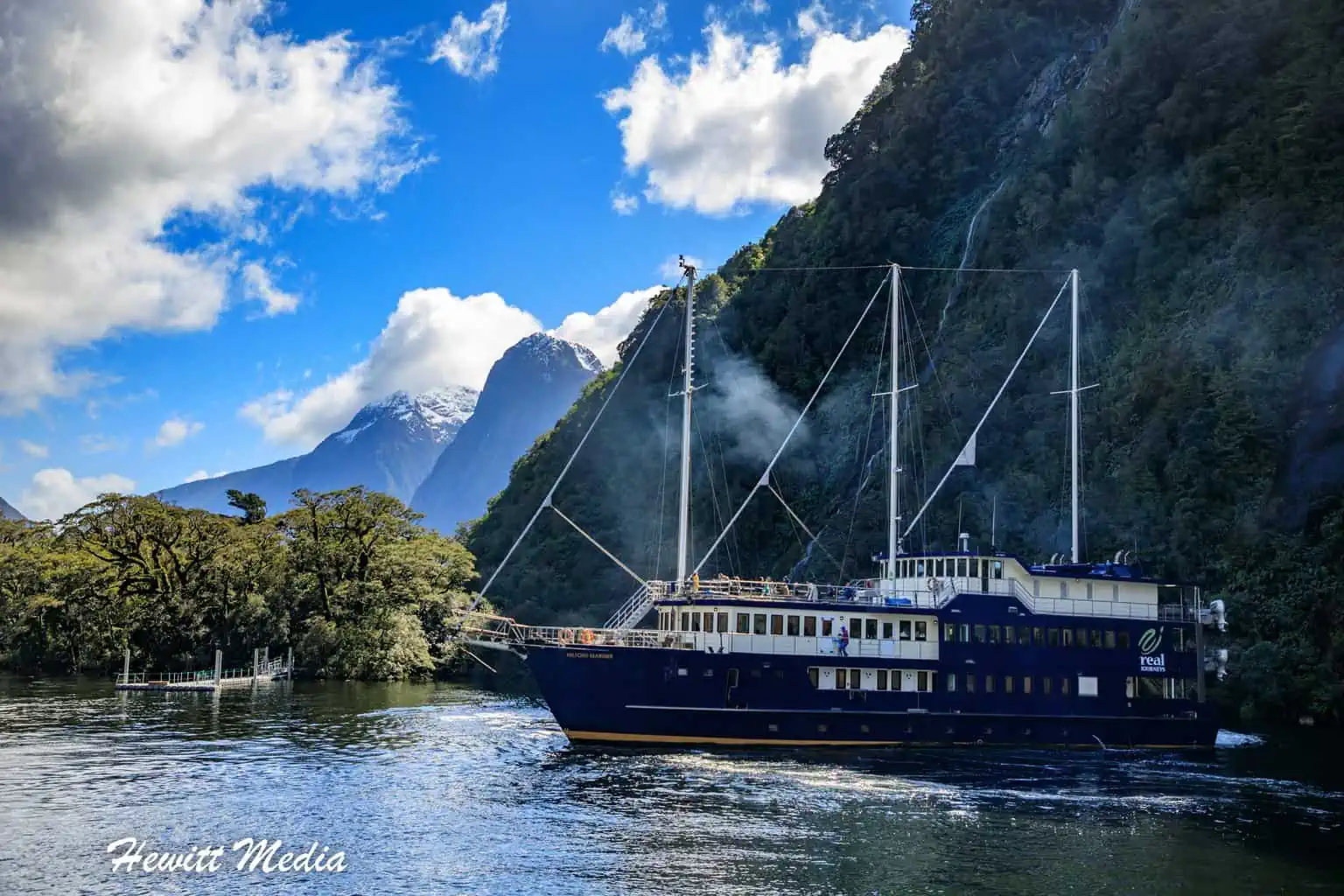
On the last day of your adventure, there is no hiking involved. Instead, on this day you will take a boat cruise through one of the world’s most amazing and beautiful landscapes. As you cruise through Milford Sound, you will enjoy beautiful coastal mountains, stunning waterfalls that cascade into the ocean, and a wide array of marine wildlife that calls the sound their home. This includes dolphins, penguins, whales, sharks, sea lions, and a wide array of birds.
What to Pack for the Milford Track Hike
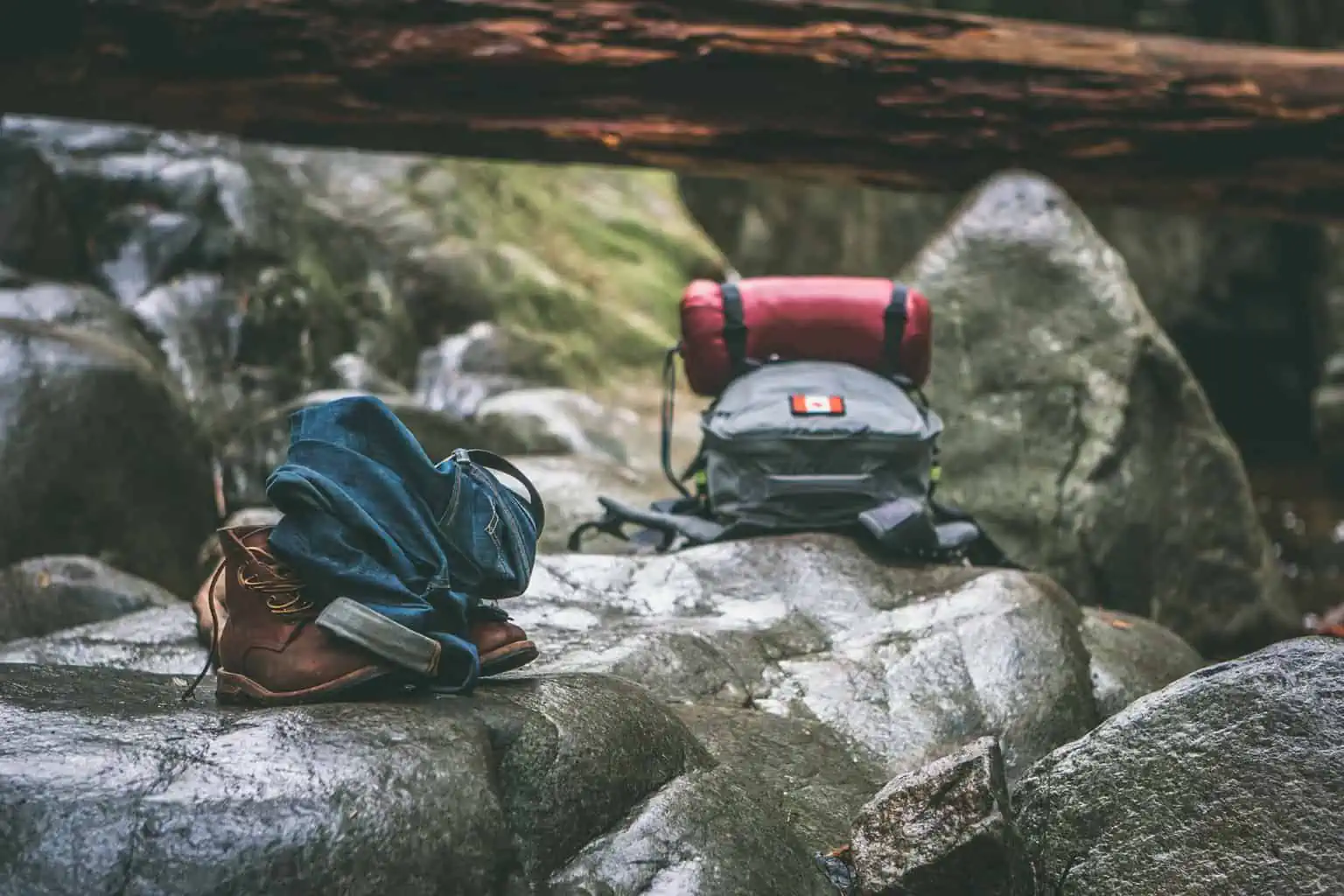
Before you set off for your adventure, you must be prepared when you arrive at Fiordland National Park to start your hike of the Milford Track. If you don’t pack the right gear, your experience on the track can be a miserable or even dangerous one. To help make sure you are prepared, I have listed the gear that you should plan to bring with you in my Milford Track hiking guide below. I even included a printable checklist to help make sure you don’t forget anything important.
View Printable Packing Checklist
Passport

To visit New Zealand, you will need to have a passport and have at least one empty page in your passport book. In addition, you will also need to make sure you apply for an Electronic Travel Authorization (ETA) before you travel.
Travel Insurance
Before you head to New Zealand, I would recommend that you purchase travel insurance. You will want to have this in case something happens and you have to either postpone or cancel your trip. It would also be a great idea to purchase emergency medical evacuation insurance. Should an emergency occur and you need to be medically evacuated from the country, that could cost you tens of thousands of dollars.
General Guidelines
When packing for any trip, it is important to know what you might expect when you arrive. This is where we typically need to lean on other people’s experiences the most. As you start to pack for your trip to New Zealand, please use the general packing principles I have listed in my Milford Track hiking guide below. They will help guide you in what to bring and not bring with you on your trip.
Prepare for the Elements
If you aren’t familiar with Fiordland National Park, the two most important things to know about the area when packing is that it gets a lot of rain each year and the weather can get quite cold and be unpredictable. There are parts of Fiordland National Park that get upwards of 22 feet of rain each year, so it is one of the wettest places on Earth. When packing for your trip, you will definitely want to make sure you have adequate rain gear. You are also going to want to make sure you pack warm clothes because the temperatures can get quite cold at times within the park.
Pack Layers to Wear
Because there are such great variations in the temperature throughout the day, it will be important to pack layers of clothes to wear. You will want to make sure that you have a base layer that wicks away moisture or dries quickly so that you don’t get cold if it rains or after a long day of sweating. Your layers should also include a warm hat, gloves, and a warm jacket that you can put on if the temperature drops.
The Lighter the Better
It will be important for you to choose your gear wisely when you pack. Not only should your gear be comfortable, fit for hiking, and adequate for the changing temperatures, but it should also be lightweight. You will be doing a lot of walking each day. You aren’t going to want to carry a ton of weight on your back as you hike on the Milford Track.

Don’t Forget Safety
It’s an easy thing to forget when you are packing, but safety should be at the forefront of your mind. The last thing you want is to get seriously ill or injured when you are hiking the Milford Track because you weren’t safety conscious when you packed. Below are some safety concerns you should keep in mind when deciding what to pack for your trip.
- The Weather – As I said above, don’t dress too light or too heavy and leave yourself susceptible to the weather. Be prepared by packing layers.
- Bring Adequate Footwear – Take the recommendations I make below on footwear seriously. You are going to want to make sure you bring the proper hiking footwear with you on your trip to keep you both comfortable and safe.
- Water, Water, Water – Be prepared to drink lots of water. Don’t just rely on being able to buy bottled water when you need it. Bring your own water bottle or hydration bladder.
The Essential Gear for Hiking the Milford Track
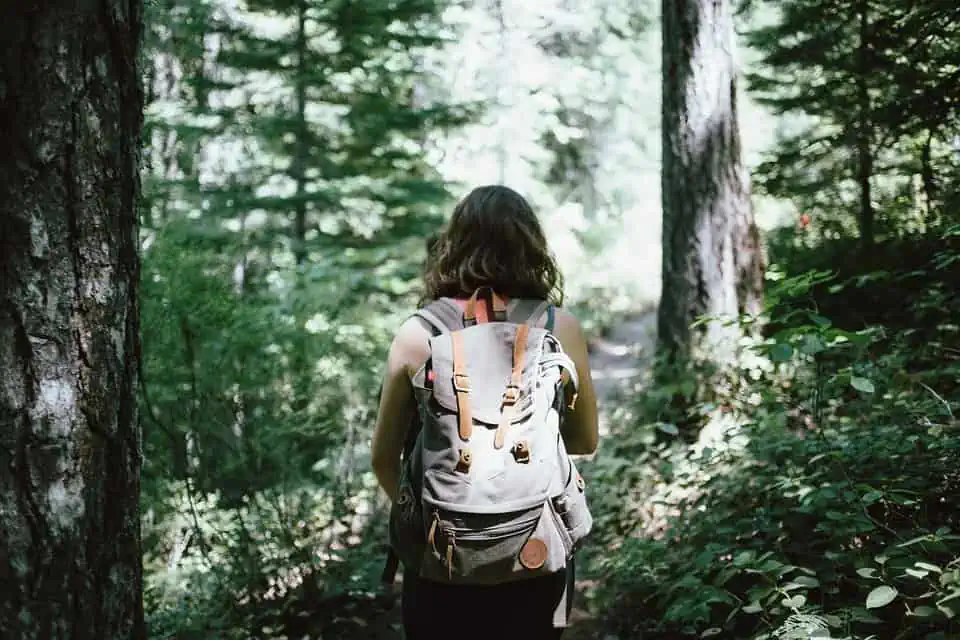
I have included all of the necessary clothing, gear, and medications that I would recommend in my Milford Track hiking guide below. I have also included some valuable packing advice, my recommendations for gear in case you are interested, as well as an easy-to-print packing checklist for you to use as you prepare for your trip.
NOTE: The gear in my Milford Track hiking guide below includes links to my Amazon Store Site. I may receive a commission when you purchase these products from my store, though at no additional cost to you. I hand-pick and recommend only the products that I am either familiar with or comfortable recommending
Hiking Boots (1 Pair)
 | You are going to be doing a ton of hiking on the Milford Track, so you are going to want to make sure you take really good care of your feet. One of the best ways you can do that is to invest in a pair of really good hiking boots. A good set of hiking boots will not only keep your feet comfortable, but they are vital to keeping you safe. You are going to be in some fairly remote areas when on the trail, so hiking in uncomfortable boots, getting bad blisters, or slipping and severely hurting yourself can be a big deal. If you are going to overspend on one item on your trip, this would be near the top of the list. |
| View Recommended Options On Amazon.com |
Choosing the Right Hiking Boots
Choosing the right hiking boots is important because you are going to be spending a lot of time hiking, and much of that will be on slippery and uneven trails. When looking for a good set of hiking boots for this trip, please keep the following characteristics in mind:
- The boots should be lightweight. The last thing you will want to have is heavy boots when you are doing as much hiking as you will be doing. It is said that each pound of weight on your feet equates to roughly five pounds on your back, so your boot weight really matters. Look for boots that weigh between 2.2lbs (1kg) to 3.3lbs (1.5kg). Anything more than that is too heavy.
- Look for boots that have a rubber sole with deep lugs. This will give you the best traction and ensure that you don’t slip on wet trails.
- Look for a mid-to-high height boot to give you good ankle support. You are going to be hiking on some uneven surfaces and you don’t want to twist an ankle while on a trail. For added support, look for boots that have speed hooks or D Strings.
- Make sure the boots you purchase are waterproof. Hiking in wet boots can be a miserable experience and keeping your feet dry can be difficult without the proper boots.
Hiking Pants (2 Pairs)
 | Because you will be doing a lot of hiking on the Milford Track, you are going to want to make sure that you have the right pants to wear. Wearing the wrong pants can make hiking uncomfortable, especially when you get wet, and the last thing you will want is to be uncomfortable with many days of long hiking in front of you. The pants you choose should be lightweight, moisture-wicking, and comfortable. Under no circumstances should you pack denim jeans to wear. They don’t wick moisture, take a long time to dry, and will leave you freezing cold if they get wet. I strongly suggest that you bring pants that wick moisture and sweat. This way you won’t be cold if you work up a sweat hiking during the day. |
| View Recommended Options on Amazon.com |
Breathable T-Shirts (1 Per Day)
 | When you hike the number of miles that you are going to be hiking on the Milford Track, you are going to build up a sweat. The last thing you want is to be left with a soaking wet shirt when you are finished hiking and be freezing cold because of it. That is why I strongly recommend that you bring with you a breathable dry fast shirt for each day you will be hiking. They will keep you cool when working up a sweat hiking and then dry quickly so that you won’t freeze when you settle in for the night. There are some great brands you can buy that I have tried out including Under Armour, Columbia, North Face, and Patagonia. I have included some recommendations you can find on Amazon.com below if you would like some ideas. |
| View Recommended Options on Amazon.com |
Base Layer (Top and Bottom)
 | A good base layer is critically important to keep you warm when the temperature starts to fall. A good base layer will wick away moisture and keep you warm even when wet. I would recommend bringing a medium to heavy base layer if you get cold easily and a light base layer if you tend to get warm easily when hiking. I like to use a lighter base layer bottom and a heavier base layer top when I hike, but what you decide to bring is up to you. If you are interested, I have included a number of base layers that I recommend for you to review. |
| View Recommended Options on Amazon.com |
Fleece or Nano Puff Down Jacket (One Jacket)
 | When you are hiking on the Milford Track, you are going to be dealing with quickly fluctuating temperatures. It could be rather warm one minute and then quite cold the next. You are going to want to have a warm jacket with you that is light and easy to pack. I have found that one of the best options is a nano puff down jacket. These jackets are not only warm, but they are also very light and easy to pack in your backpack. I have listed some recommendations on Amazon below if you are interested in getting a new jacket for your trip. |
| View Recommended Options on Amazon.com |
Rain Jacket and Rain Pants (One Pair)
 | Fiordland National Park gets a ton of rain each year. In fact, it rains in the park roughly 50% of the days each year. That means that it is very likely to be raining on at least some of the days of your hike. The last thing you want is to get soaking wet when hiking as you will quickly get cold and be at risk of becoming hypothermic. Because of this, I would strongly recommend bringing a good hardshell (not softshell) rain jacket and pants with you when you hike the Milford Track. If you aren’t quite sure about what type of rain gear to bring, REI has a great article about backpacking in the rain with some recommendations in it that you can review. I have included some rain jackets and pants that I really like that are available on Amazon.com for you to browse thru below. |
| View Recommended Options on Amazon.com |
Hat and Gloves (1 Hat and 1 Pair of Gloves)
 | Because the temperature can fluctuate so greatly when you are in Fiordland National Park, I would strongly recommend that you pack a pair of warm gloves and a winter hat with you. If the temperature drops, they can really go a long way in keeping you warm, especially at night. If you are looking for some suggestions on what type of gloves or hat to bring, I have included some of my recommendations below. |
| View Recommended Options on Amazon.com |
Under Wear (One Per Day and Two Sports Bras for Women)
 | Having the right underwear when you go on this hike can be the difference between comfort and miserableness. For that reason, I would suggest that you think carefully about what type of underwear you pack. I would recommend something designed for sports or workout use. There are some really great products out there that are designed to wick moisture and keep you cool. Obviously, you are going to want to bring a pair for each day of your trip, so the underwear should be lightweight as well. For the ladies, I have been told to recommend bringing at least a few sports bras with you as well. |
| View Recommended Options on Amazon.com |
Hiking Socks (Pair for Each Day)
 | Taking care of your feet is extremely important when you are taking long hikes, and the first layer of defense is the socks that you wear. You are going to want to have socks that are designed for hiking, as these socks are designed to keep your feet warm, even when they are wet. You are going to want to avoid bringing cotton socks, as these will do the opposite of keeping your feet warm when they are sweaty or wet. I would suggest bringing a pair of quality hiking socks for each day of your hike. If you are interested in some good recommendations, I have included some below. |
| View Recommended Options on Amazon.com |
Hiking Gaiters (Optional)
 | For certain hikes, a good pair of gaiters is an optional luxury item that you might consider bringing with you. When you are hiking the Milford Track in Fiordland National Park, I would say that a good pair of gaiters is closer to a necessity than a luxury. With so much moisture in the park, a good pair of gaiters can really go a long way in keeping your hiking boots dry and keep you warm. For that reason alone, I would strongly recommend packing a pair. If you are interested in looking at a pair, I listed a pair I recommend below. |
| My Recommendation: WINOMO Adjustable Outdoor Waterproof Ankle Walking Gaiters Hiking |
Hiking Backpack (1 Backpack)
 | Choosing the right backpack to bring on your trek of the Milford Track is critically important because it will be used to carry all of the gear that you will need. Not only is it important to pick the right size bag to fit your gear, but the design and quality of the bag will be important as well. If you don’t bring a bag that is properly weather resistant and comfortable, it can make your hike a miserable experience. You will essentially be living out of this bag, so if it becomes a burden to carry or the gear inside of the bag gets wet, then you are immediately at a disadvantage. Below I have provided some general guidelines for choosing the right backpack, as well as some of my recommendations. I love Osprey’s backpacks as they are really well designed and durable. |
| View Recommended Options on Amazon.com |
Choosing the Right Hiking Backpack
Choosing the right backpack to take on your trip is a very important decision. This is what you will be carrying and what you aren’t wearing. Having a bag that can fit what you need and is comfortable and durable is important. I have included some general guidelines for what you should look for in a backpack in my Milford Track hiking guide below.
Bag Size
- If you are hiking the Milford Track on your own, then you are going to need to carry your own food and some additional water with you. For that reason, you are going to need to bring a bigger bag. For the typical hiker, a 30-35L bag should be sufficient. This should be big enough to fit around 22lbs (or 10kg) of gear. Remember, you will typically be wearing around 6-10lbs of gear each day as well.
- If you are hiking as part of a guided group, then you don’t need to worry about carrying your food. Therefore, you can afford to bring a smaller backpack. Your average hiker’s backpack that can be used to carry your personal gear that you aren’t wearing should be sufficient.
Design
- You should pay close attention when purchasing a hiking backpack to make sure that they are both durable and weather-resistant. Pay attention to the material the bags are made out of, whether they have a weather-resistant coating, and whether the bags come with rain covers.
- Your bag should be comfortable to wear. Good bags will be adjustable with ample padding on the shoulder straps and waist belt and include a well-designed suspension system that evenly distributes the weight of the bag among the muscles used to carry the load. I would suggest trying on various bags at REI or another outdoor gear retailer before purchasing your bag.
- For ladies, I would suggest looking at a backpack specially designed for women. Most well-designed women’s bags also have reshaped waist belts designed for women’s bodies, which can be important because the waist belt is critical for transferring weight off your back.
Sun Glasses
 | You are going to want to have sunglasses with you when you hike the Milford Track. Even though it can rain half the time when the sun does come out you don’t want to have to worry about shielding your eyes from it. In addition, a good pair of glasses can also help shield your eyes from the rain when the weather does turn bad. I would advise that you bring a pair of sunglasses that don’t come off your face easily because the last thing you want to have to worry about when on the trail is losing your glasses or other gear. |
| View Recommended Options on Amazon.com |
Planning Your Water Needs Appropriately
Staying hydrated when hiking at high elevations is critically important. To assist you in planning your water needs for the hike on the Milford Track, I have included some general guidelines in my Milford Track hiking guide below.
- Make sure you drink at least 2-3 liters of water each day as it is critically important that you stay hydrated when hiking.
- If you are hiking the Milford Track with a guide, the crew should provide you with some water. I would recommend checking with your guide service to see what they recommend you bring in terms of water bottles and bladders for the hike. If you are hiking the track solo, then you will want to make sure you are prepared to carry enough water for yourself.
- If you prefer to bring water bottles, you will need to be able to carry either two 1-liter bottles or one 1.5-liter bottle, and make sure that you drink at least 1 liter of water before starting each day.
- If you prefer to carry a hydration bladder in your backpack, there are some good 2-5 liter bladders available on Amazon.com that I recommend above.
Headlamp or Flashlight
 | When it gets dark at night, you are going to need something to assist you in getting around the huts. I recommend that you invest in bringing a travel headlamp or travel flashlight with you on the trail. A travel headlamp is ideal because you don’t need to hold it, but a small flashlight will do as well. There are some really slick waterproof headlamps on the market and I have a few of those on my recommended list below. Whichever option you choose to go with, I would make sure that it is lightweight so that you aren’t adding too much weight to your pack. |
| View Recommended Options on Amazon.com |
Camera Gear
 | On top of being one of the premier hikes in this world, the Milford Track also cuts thru some absolutely stunning scenery. For this reason, you will want to make sure you have a camera with you if you hike the trail. If you are interested in taking high-resolution photos, you can bring your DSLR. However, I would ultimately recommend a mirrorless camera if you are in the market for a camera for this trip. A mirrorless camera will give you the quality of a DSLR, but they are much lighter to carry. Some mirrorless cameras that I recommend include Sony’s Alpha A7 III, Nikon’s Z7, Fujifilm’s X-T3, and Panasonic’s Lumix G9. I have included these cameras in my recommendations on Amazon.com, which can be found below. |
| View Recommended Options on Amazon.com |
50%-100% Deet Insect Repellent
 | When doing any hike in this world, it is always a good idea to bring insect repellant with you. Even though you aren’t in a Malaria, Dengue fever, or Yellow Fever hot spot in New Zealand, it still makes sense to have some DEET insect repellant with you when you do the Milford Track hike. At the very least, it will keep insects from becoming a nuisance and bothering you as you hike. If you would like some additional guidance on what type of mosquito repellant to bring with you, I would suggest referring to the CDC recommendations on avoiding bug bites on their website. |
| View Recommended Options on Amazon.com |
Sun Screen
 | Because Fiordland National Park gets so much rain, people often overlook the need to bring sunscreen with them when they do the Milford Track hike. However, if the sun does come out, a bad sunburn can really make a long hike uncomfortable. I would recommend carrying an SPF 30-50 sunscreen with you when you hike the Milford Track. If you would like to purchase some before your trip, I have included a link to some of my recommendations for you to review below. |
| View Recommended Options on Amazon.com |
Motion Sickness Pills
 | Motion sickness pills are not something that you will need when hiking the Milford Track, but if you are planning on taking a boat cruise of Milford Sound after your hike, they could really come in handy. Most of the boat cruises of Milford Sound go a short way out into the Tasman Sea during the tour and the waves can be quite large depending on the weather. I have seen people get seasick from the Milford Sound cruises, so you will want to be prepared with motion sickness pills or patches. |
| View Recommended Options on Amazon.com |
Additional Items
In addition to the items I recommended above, here are some additional pieces of equipment, medication, and medical supplies that you might want to consider bringing with you.
- Hang-up Toiletry Bag
- Portable Charger
- Dry Bag or Zip Lock Bags
- Travel First Aid Kit
- Blister Pads or Mole Skin
- Tylenol or Ibuprofen
- Ear Plugs
- Pee Bottle (For Women)
Don’t Forget to Subscribe to My Adventures!

Let Me Help You Save On Your Next Adventure!

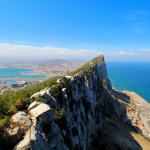



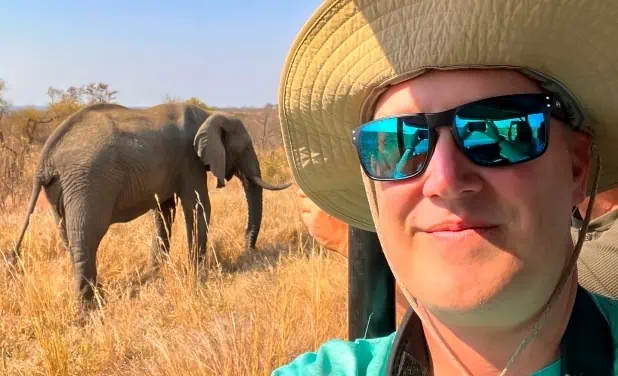
Sounds like an amazing experience. When I went to Machu Picchu I was so glad I decided to take the train, I got horrible altitude sickness in Cusco and was miserable. I think I’d have to stay about a week to acclimate for the hike. I met a couple of guys later who were big hikers….but had a miserable experience. They did everything wrong. Arrived late, got little sleep, ate a big meal, and drank quite a bit the night before. One if the guys said he was practically crawling….and was mortified that the tiny little guide had to carry his pack for him (along with a huge pack of his own since he carried supplies for meals and other group needs.) Their misery was my entertainment..
So…..how does the altitude compare to Machu Pichu?
Thank you for reading and for the comment Kim! Unfortunately, I think a lot of people underestimate the altitude when taking on the Inca Trail. I have talked to quite a few people who struggled with the altitude.
Lucky for me, I got a prescription for altitude medication and it worked amazingly. No headaches and very little altitude related fatigue. If you ever decide to go back and hike the trail, I would give that a try.
With the Milford Track, the highest you get is about 1,150 meters, so no altitude issues to worry about 😀
Yeah, I found there was medication after I returned from our trip. I was so incredibly miserable! And cocoa tea didn’t cut it. Still, I had fun there, in spite of eating little and sleeping a lot. I was a boring travel companion, that is for sure. But we met great people.
I’ll put the hike on my maybe list for Australia. Though I already have so much I want to do there!
There is no shortage of things to do in Australia and New Zealand. That’s for sure! 😀
This sounds like an amazing hike!
It’s such a beautiful area!! 😀👍
A wonderful and detailed post as always. Looks like a fun hike (except maybe day 3 🙂 ). I wonder how the beauty compares to the Norwegian fjords – I haven’t been to either place.
Thank you so much!! I haven’t been to the Norweigan Fjords either, but I hear they are beautiful.